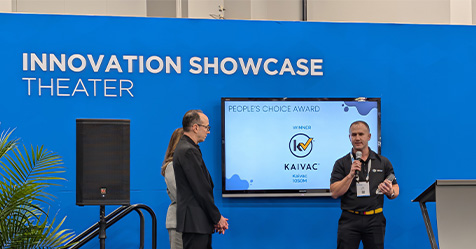As summer approaches, schools must evaluate their maintenance procedures as they plan to revitalize the appearance of their buildings for the upcoming year. For many facilities, resilient floor maintenance is the largest single task. Experience shows that approximately 50 percent of custodial summer clean-up is spent on classroom floor maintenance. Because this work is so demanding, the custodial staff must use their time effectively. With the right approach, facility managers can optimize maintenance, making floors look their best at the lowest total cost.
The key to optimizing a resilient floor program is dividing the total square footage into two categories. Each year, 25 percent of the flooring should be stripped and recoated. The remainder of the floor should be restored with a top scrub and recoat process. By following this method, the floors will look great and take full advantage of the useful lifespan of the floor finish.
Before beginning the desired maintenance procedure, it’s important to select a floor finish that will best meet your needs. Facility managers will need to consider the amount of traffic, the maintenance capabilities, and the overall appearance expectations when selecting the proper floor finish. Consulting with floor finish manufacturers will help ensure the best finish is selected for each situation.
Strip and Finish: A best-practice resilient floor care program starts from the ground up. Get a fresh start by stripping away the old finish and building a new protective coating with multiple layers of floor finish. If floors show yellowing, embedded soil, or irreparable damage, it is time to strip and recoat. It’s recommended to completely strip away floor finish and give your floors a fresh start every three to five years. Closely following the manufacturer’s label directions is critical to ensuring the best outcome. Over the past couple decades, “dry strip” methods have been introduced, but these are not recommended. Dry stripping with abrasive pads does not remove multiple layers of finish and surface contaminants effectively, which can lead to defects in the newly applied floor finish. This method also tends to create a large amount of dust that can become airborne and tracked onto adjacent surfaces.
Scrub and Recoat: Multiple coats of floor finish create a smooth protective coating, resulting in a glossy appearance. Over time, light scratching and soil can diminish the surface appearance of the floor, making it look dull and dirty. To extend the life of a floor coating, an interim process is recommended to revitalize the floor’s appearance. By scrubbing with a floor machine and a blue pad, custodians can remove one to two layers of floor finish, along with the embedded soil and scratches in those layers. After the floor is clean and dry, apply one to three coats of floor finish to restore the level of gloss and protection. If floors exhibit a moderate level of scratches or embedded soil, facilities may consider a deep scrub using maroon pads in place of the blue pad. This process will remove more layers of floor finish and help create a more uniform appearance when coats of finish are applied. Because this method results in deeper abrasion marks on the floor, more coats of floor finish may be needed to reach the desired gloss level.
Once finished, it’s important to implement proper maintenance procedures to keep floors looking good for the duration of the school year. Daily floor cleaning, which includes dust mopping and cleaning with a recommended neutral cleaner, is a critical step in any floor maintenance program. Staying on top of daily maintenance will protect and beautify the floor by removing abrasive soils before they are ground into the floor finish. As always, it’s a good idea to consult with floor finish manufacturers to ensure proper maintenance procedures are being followed to maximize the performance of the finish.
For more tips, watch or listen to this episode of Straight Talk! below:


